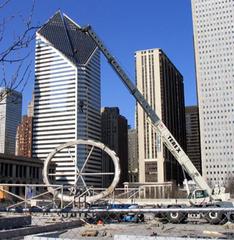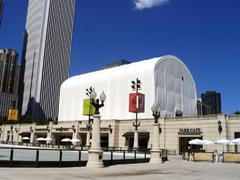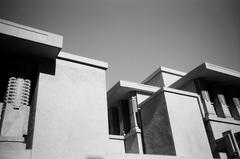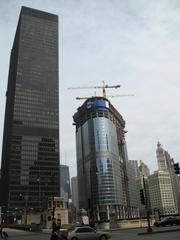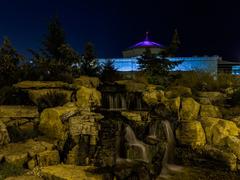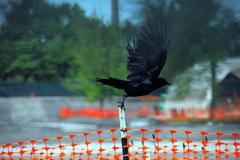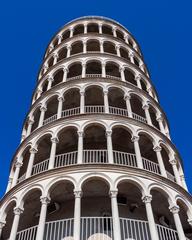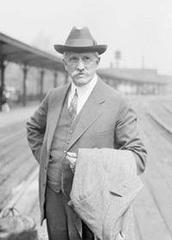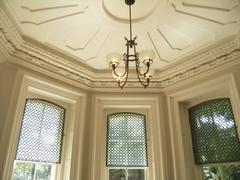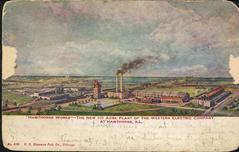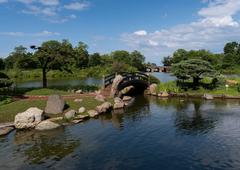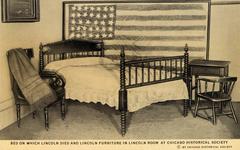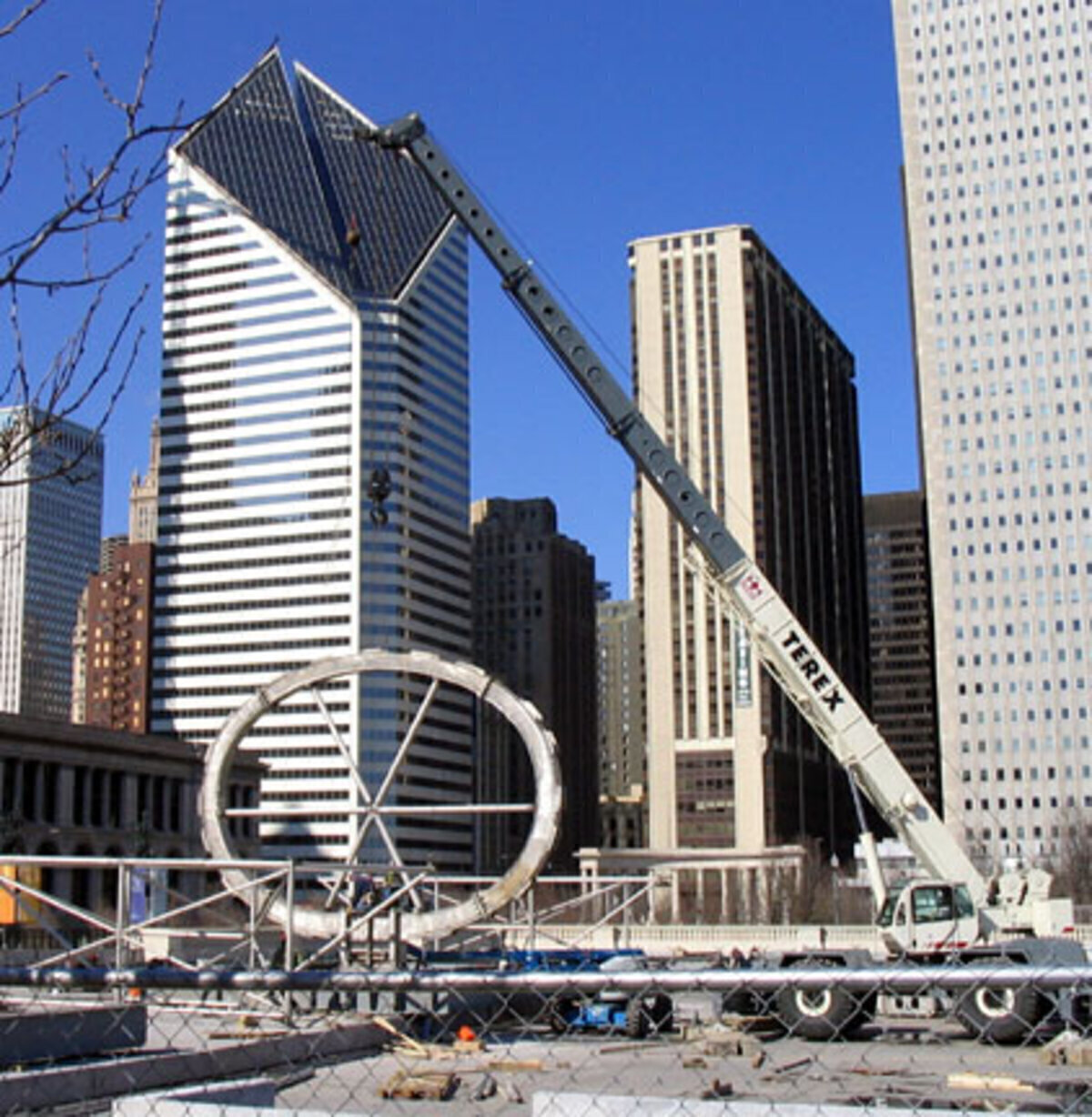
Comprehensive Guide to Cloud Gate
Date: 17/07/2024
Introduction
Cloud Gate, affectionately known as “The Bean,” stands as a testament to Chicago’s commitment to public art and innovative design. Created by British artist Anish Kapoor, this monumental sculpture has become one of the city’s most iconic landmarks since its unveiling in 2004 (source). Inspired by liquid mercury, Kapoor’s vision was to create a seamless, reflective form that would interact dynamically with the cityscape and sky. The ambitious Millennium Park project in the late 1990s set the stage for Cloud Gate’s creation, transforming a desolate rail yard into a vibrant public space. The sculpture has not only captivated the public’s imagination but also played a significant role in revitalizing downtown Chicago, drawing millions of visitors each year and becoming a global icon (source).
Table of Contents
- Historical Background and Significance
- Cloud Gate Visitor Information
- Cloud Gate Today: A Symbol of Chicago and Public Art
- Frequently Asked Questions (FAQ)
- Stay Up to Date
Historical Background and Significance
The Millennium Park Project and the Call for Art
The story of Cloud Gate begins with the ambitious Millennium Park project. In the late 1990s, what was once a desolate rail yard and parking lot began its transformation into a world-class public park. A key aspect of this transformation was the incorporation of large-scale public art installations. To find the perfect centerpiece for the park’s AT&T Plaza, the city held a design competition in 1999. Over 160 artists from around the world submitted proposals, each vying to leave their mark on Chicago’s landscape.
Anish Kapoor’s Vision: Inspiration and Challenges
Among the many submissions, one stood out for its sheer audacity and artistic vision - Anish Kapoor’s “Cloud Gate.” Inspired by liquid mercury, Kapoor envisioned a massive, seamless sculpture that would reflect and distort the city’s skyline. The sculpture’s elliptical shape and highly polished surface were designed to create a fluid, dynamic interaction with the surrounding environment, inviting viewers to engage with their reflections and the cityscape in a whole new way.
However, realizing Kapoor’s vision proved to be a monumental challenge. The sheer scale of the sculpture, combined with its complex, seamless design, pushed the boundaries of engineering and fabrication. The project faced numerous setbacks and delays, with many questioning whether Kapoor’s ambitious design could be brought to life.
From Concept to Reality: Engineering and Construction
The construction of Cloud Gate was a testament to human ingenuity and collaboration. Engineers and fabricators from around the world pooled their expertise to overcome the technical hurdles. The final design called for 168 stainless steel plates, meticulously welded together with no visible seams. The plates were then painstakingly polished to achieve the desired mirror-like finish.
The assembly process was a sight to behold, with massive cranes carefully lifting and positioning each plate. The final piece, weighing in at a staggering 110 tons, was finally unveiled to the public in 2004, albeit without its signature shine due to ongoing polishing.
Unveiling and Public Reception
Despite the initial delays and unfinished state, Cloud Gate was an instant sensation. Its unique shape and reflective surface captivated the public’s imagination, quickly earning it the nickname “The Bean” for its resemblance to a giant legume. The sculpture’s ability to reflect and distort the city’s skyline, creating a constantly shifting kaleidoscope of images, proved endlessly fascinating to visitors.
The completion of the polishing in 2006 only enhanced Cloud Gate’s allure. The gleaming, seamless surface transformed the sculpture into a giant, liquid-like mirror, further blurring the lines between art and reality.
Cloud Gate Visitor Information
Visiting Hours
Cloud Gate is accessible to the public 24/7, making it a perfect spot for both early morning visits and late-night strolls. However, the best time to visit is usually early morning or late evening to avoid large crowds.
Tickets and Admission
One of the best things about Cloud Gate is that it is free to visit. No tickets are required, allowing everyone to enjoy this iconic piece of art without any cost.
Travel Tips
- Getting There: Cloud Gate is located in Millennium Park at 201 E Randolph St, Chicago, IL 60602. It’s easily accessible by public transportation, including buses and trains. The nearest L train stop is at Washington/Wabash.
- Photography Tips: For the best photos, visit early in the morning or during sunset when the lighting is ideal. Don’t forget to explore different angles and perspectives.
- Nearby Attractions: While you’re in Millennium Park, don’t miss other highlights such as the Crown Fountain, the Jay Pritzker Pavilion, and the Lurie Garden.
Cloud Gate Today: A Symbol of Chicago and Public Art
Today, Cloud Gate stands as one of Chicago’s most recognizable landmarks, drawing millions of visitors each year. It has become a symbol of the city’s vibrant cultural scene and its commitment to public art. The sculpture’s enduring popularity is a testament to its ability to engage and inspire people from all walks of life.
Beyond its aesthetic appeal, Cloud Gate has also become a social hub, a place where locals and tourists alike gather to admire the art, take selfies, and experience the city from a unique perspective. It has become a symbol of Chicago’s welcoming spirit and its ability to bring people together.
Cloud Gate’s story is a reminder that even the most ambitious artistic visions can be realized with perseverance, ingenuity, and a commitment to pushing the boundaries of what’s possible. It stands as a shining example of the power of public art to transform spaces, inspire creativity, and foster a sense of community.
Frequently Asked Questions (FAQ)
What time does Cloud Gate open?
Cloud Gate is open 24/7, allowing visitors to enjoy it any time of the day or night.
Are there guided tours available for Cloud Gate?
Yes, several guided tours of Millennium Park include Cloud Gate. These tours provide historical insights and interesting facts about the sculpture and the park.
Is Cloud Gate accessible to people with disabilities?
Yes, Cloud Gate is fully accessible. Millennium Park offers pathways and ramps that ensure everyone can enjoy the sculpture.
Can I touch Cloud Gate?
Yes, visitors are encouraged to touch and interact with Cloud Gate. Its reflective surface is meant to be a hands-on experience.
Stay Up to Date
For more information and updates about Cloud Gate and other attractions in Chicago, download our mobile app Audiala, check out our other related posts, or follow us on social media.
Conclusion
Cloud Gate, with its seamless design and reflective surface, continues to captivate and inspire visitors from around the world. It stands as a symbol of Chicago’s modern artistic spirit and a testament to the city’s dedication to public art. The sculpture’s ability to engage and distort the city’s skyline creates a unique, interactive experience that resonates with people of all ages and backgrounds. Cloud Gate’s enduring popularity and its role in revitalizing Millennium Park underscore the transformative power of public art. As a social hub and a global icon, ‘The Bean’ exemplifies how ambitious artistic visions can become reality through perseverance and innovation, enriching the cultural fabric of the city (source, source).
